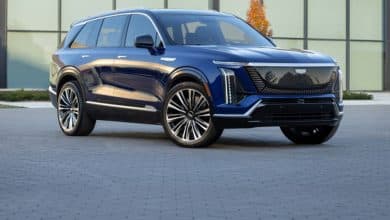With unprecedented measures, Biden wants to promote the adoption of electric vehicles

After several administrations, including those of Canada, Quebec, California and a few European cities, it is now the turn of the United States to react to the greenhouse gas emissions. The Biden administration, through the Environmental Protection Agency (EPA), unveiled its plan yesterday to reduce emissions from the transportation sector. And this regulation is downright unprecedented in US history.
If the regulations are accepted, 67% of personal vehicles should be fully electric by 2032. This is the goal that these measures aim to achieve. And this path will not be made by the imposition of minimum quotas for the sale of electric vehicles, but by regulations aimed at limiting the quantity of greenhouse gases emitted by the vehicles sold by each manufacturer. According to the EPA, which manages air quality, the rules are so strict that they require the adoption of electric vehicles to meet the target.

Apart from personal vehicles, these measures will also affect any other type of road transport. According to the Agency’s forecast, 46% of new medium-sized trucks, such as delivery trucks, will be electric or equipped with zero-emission technology in 2032. 25% of heavy-duty trucks and 50% of buses will also be .
EPA estimates show a reduction of 10 billion tons of CO2 by 2055 with this regulation. It also has the potential to make one of the largest economies in the world a leader in reducing greenhouse gas emissions from the transport sector.

The impact on Canada
Although it is still early to measure the extent of the impact of such regulations on the Canadian market, it goes without saying that we will suffer the repercussions, given the interdependence of the two markets. For the more optimistic, this will improve the accessibility of electric vehicles on our market due to their greater variety which could rhyme with greater availability and more affordable prices.
For the most pessimistic, this regulation will have the impact of continuing to widen the gap in vehicle availability that currently exists between Canada and the United States. It would make sense for automakers to prioritize the US market if penalties are higher on that side of the border.

According to Daniel Breton, of Electric Mobility Canada, “Due to the many uncertainties surrounding the EPA’s final rules, timing and even its adoption, MEC supports Canada’s desire to adopt its own regulations on ZEV sales. as soon as possible instead of having to wait for another country to decide if and how it will regulate its own greenhouse gas emission reductions. »
Remember that Canada, according to the standard that will come into effect in 2026, aims to achieve 83% sales of zero-emission vehicles by 2032, and 100% by 2035, more ambitious targets than those of the American government, which does not did not give a date or a way to achieve 100% sales of zero-emission vehicles.












